Key takeaways:
- Understanding animal anatomy fosters appreciation for the interconnectedness of life and supports conservation efforts.
- Interactive learning methods, such as virtual dissection and role-playing, significantly enhance student engagement and understanding.
- Utilizing diverse resources, including visual aids and hands-on kits, improves comprehension and retention of anatomical concepts.
- Addressing different learning styles and maintaining relevance in lessons are crucial for sustaining student interest in animal anatomy.
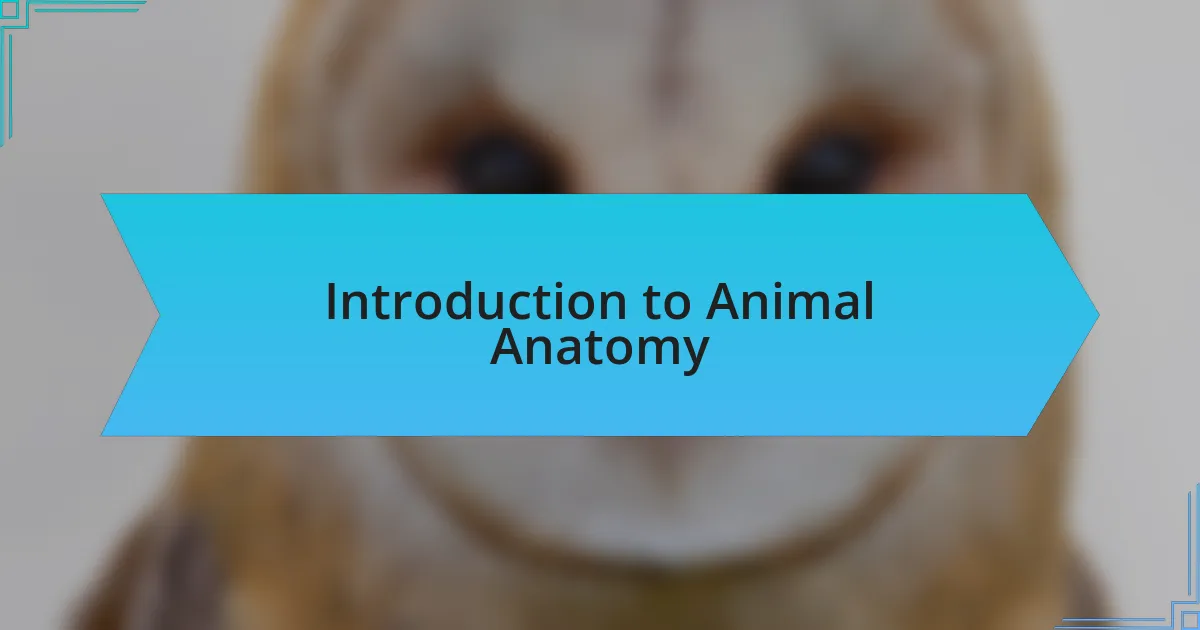
Introduction to Animal Anatomy
Animal anatomy is a fascinating subject that opens the door to understanding the incredible diversity of life forms on our planet. Have you ever looked at a dolphin and wondered how its streamlined shape helps it navigate the ocean? This curiosity is what drives us to explore the intricate designs that nature has crafted over millions of years.
From the smallest insect to the largest mammal, each creature has a unique blueprint that allows it to survive and thrive in its environment. I remember teaching a group of students about the skeletal structure of birds. They were astonished to learn how hollow bones made flight possible, sparking discussions about adaptations and survival. It’s moments like these that remind me of the wonder we can find in studying anatomy.
As we delve into animal anatomy, we uncover not just the physical structures but also the stories they tell about behavior and evolution. For instance, understanding how a cheetah’s body is built for speed made my students appreciate nature’s ingenuity. Isn’t it amazing how function and design work together in the animal kingdom?
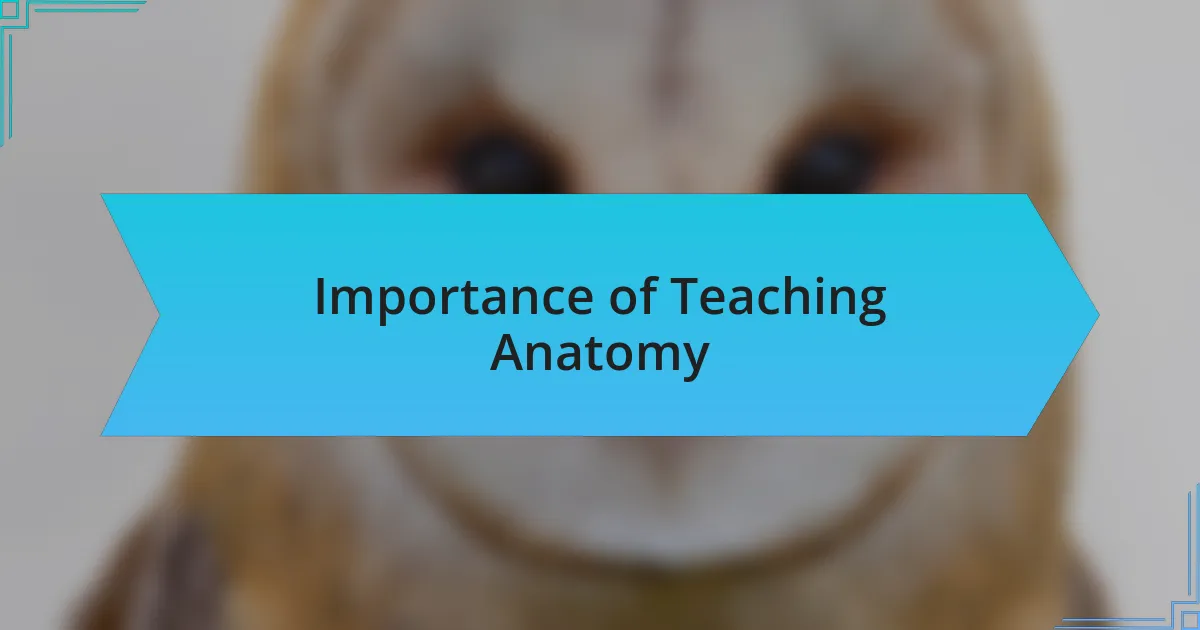
Importance of Teaching Anatomy
Teaching anatomy to students is crucial because it forms the foundation for understanding the health and well-being of animals. I’ve found that when students grasp how an animal’s organs and systems function together, their respect for these creatures deepens. It’s like having a key that unlocks a greater appreciation for the interconnectedness of life.
One time, I introduced my class to the anatomy of a heart. I vividly remember their fascination when we explored how the heart’s structure is designed to pump blood effectively. Engaging them with hands-on activities, like observing real-life specimens, sparked a sense of empathy and responsibility. Isn’t it incredible how a simple lesson can illuminate the importance of caring for animals?
Moreover, teaching anatomy fosters critical thinking about conservation efforts. By understanding how different species survive, my students become advocates for protecting their habitats. I recall a moment when a student passionately argued for the protection of sea turtles after learning about their respiratory adaptations. These connections inspire young minds to become active participants in animal welfare, which is invaluable for the future.
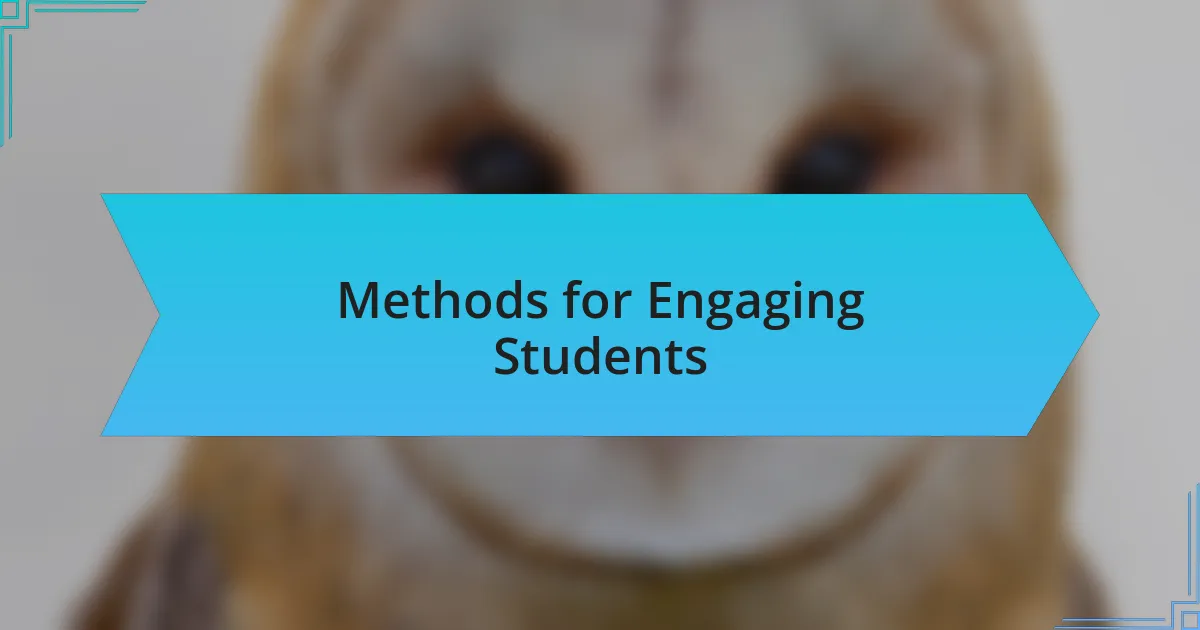
Methods for Engaging Students
To truly engage students, I’ve found that interactive learning, such as practical dissections or 3D modeling software, opens up fascinating avenues of discovery. I remember when my students used virtual dissection tools; their excitement soared as they manipulated digital organs, viewing them from every angle. This hands-on approach not only fostered curiosity but also made the learning process feel like an adventure.
Incorporating storytelling into lessons has proven invaluable as well. I often share captivating tales about animal anatomy that highlight unique adaptations—like how a chameleon’s tongue can extend to catch prey in the blink of an eye. This sparks students’ imaginations and prompts discussions. Have you noticed how narratives can turn dry facts into unforgettable experiences? I believe that an engaging story breathes life into the concepts, making them more relatable and memorable.
Using collaborative projects has also been a game-changer in my classroom. When students work in groups to create presentations about different animal systems, I see their enthusiasm ramp up significantly. It’s inspiring to witness them teach each other, transforming the classroom into a vibrant hub of shared knowledge. Isn’t it amazing how peer interaction can ignite a deeper understanding and appreciation for the complexities of animal anatomy?
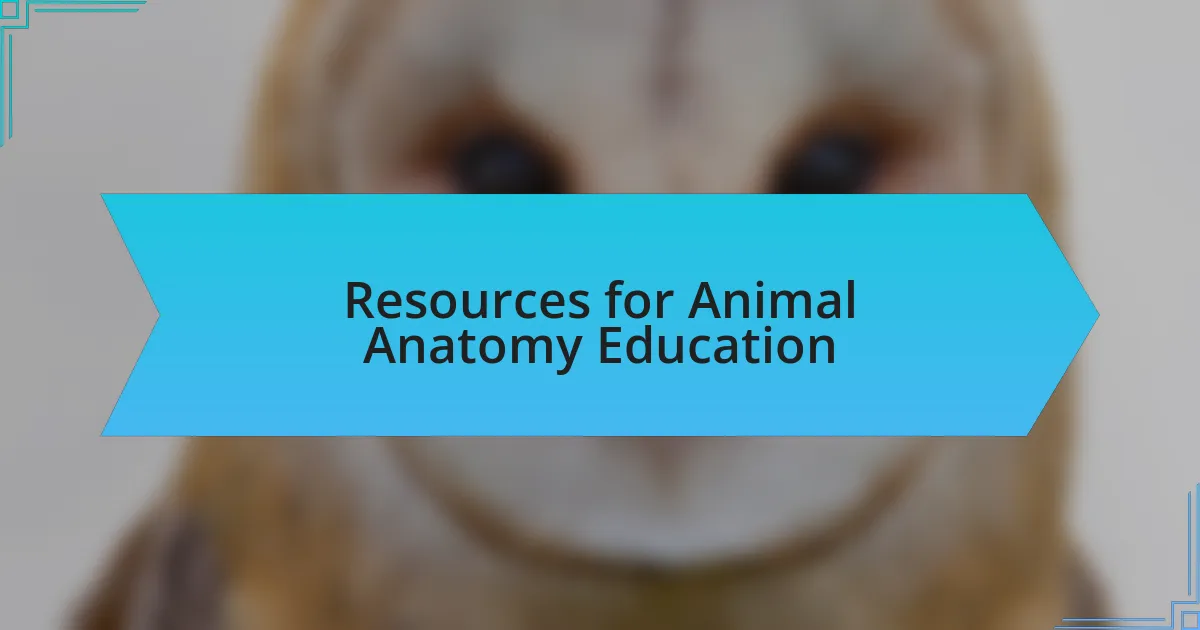
Resources for Animal Anatomy Education
Finding the right resources for teaching animal anatomy can make a world of difference in student engagement. One time, I stumbled upon an online database filled with high-quality anatomical images and diagrams that my students found fascinating. They were able to visualize anatomical structures in a way that textbooks just couldn’t provide. Have you ever seen the spark in a student’s eyes when they truly grasp a concept thanks to a well-chosen resource?
In addition to visual aids, hands-on kits that include real specimens or models are invaluable. I remember using a set of preserved animal organs during a practical lesson, and the students’ reactions were priceless. They were both intrigued and respectful, demonstrating a connection that I hadn’t anticipated. Don’t you think that interacting with actual specimens creates a lasting impression that no amount of reading can replicate?
Lastly, online platforms offering interactive modules and quizzes can enhance a student’s understanding of animal anatomy significantly. On occasion, I’ve assigned an interactive anatomy quiz that adjusted the questions based on the responses. This adaptive learning kept students challenged and engaged. Isn’t it rewarding to see learners take ownership of their education, using tools to reinforce their understanding actively?
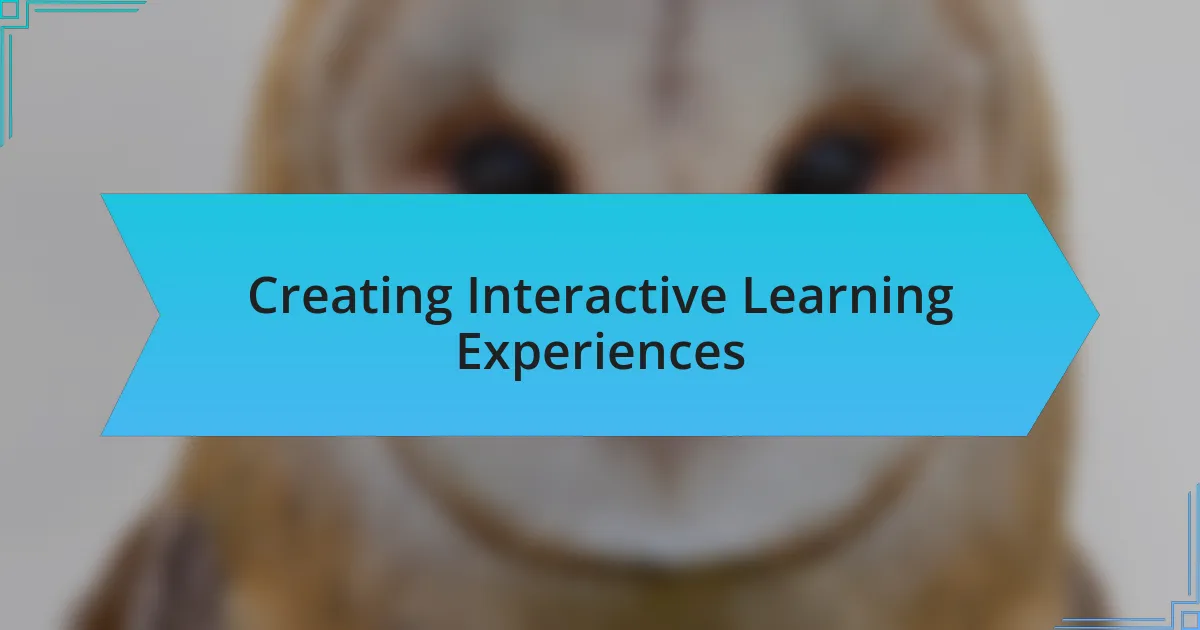
Creating Interactive Learning Experiences
Creating interactive learning experiences is essential for making animal anatomy come alive. One method I’ve utilized is role-playing, where students take on the roles of different organs or systems. The first time I tried this, I watched as a student dressed up as a heart and passionately explained its function. It was an eye-opening moment not just for her but for the entire class; who knew anatomy could spark such enthusiasm?
I’ve also found success with virtual reality (VR) tools. When I introduced VR headsets, the students entered a 3D environment where they could explore the anatomy of various animals. One student exclaimed, “I feel like I’m inside a living body!” Such immersive experiences not only make learning engaging but also help solidify complex concepts in a memorable and impactful way. How often can students say they’ve explored an animal’s inner workings without the constraints of a traditional classroom?
Finally, encouraging group projects can foster collaboration and deeper understanding. In one instance, I assigned my students to create their own presentations on different animal systems. The conversations and debates that unfolded during this project revealed levels of curiosity that I hadn’t seen before. Have you ever witnessed a group of students become so animated about a subject that they forget they’re in a classroom? It’s incredibly fulfilling to see engagement levels soar through collaborative learning.
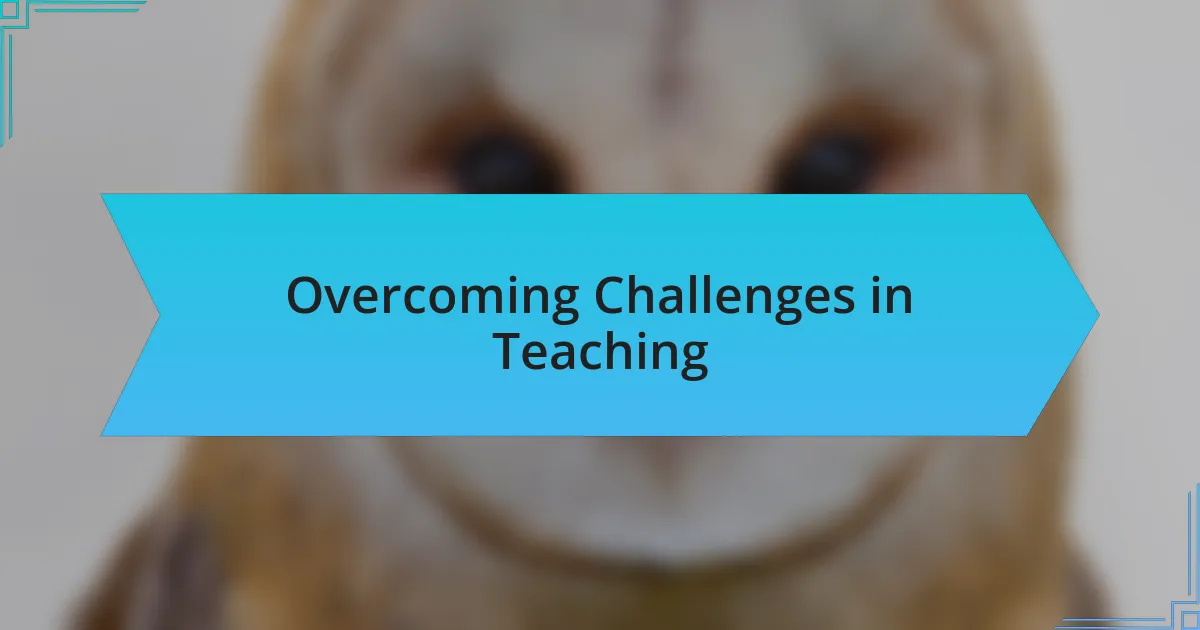
Overcoming Challenges in Teaching
Teaching can be a rewarding experience, but it’s not without its challenges. For instance, when I first started teaching animal anatomy, I encountered students who were hesitant to participate. I remember a particularly shy student who struggled to express her thoughts during discussions. To create a safe space for her, I employed small group activities where students could share ideas without the pressure of speaking in front of the entire class. It was remarkable to witness her blossoming confidence as she found her voice among peers.
Another significant hurdle was addressing diverse learning styles. I noticed that some students thrived with visual materials, while others grasped concepts better through hands-on experiences. Adapting my lessons became crucial. I started incorporating visual aids, models, and interactive tasks to accommodate everyone. That flexibility not only made the lessons more inclusive but also enriched the entire classroom dynamic. Have you ever seen how varied methods can light up students’ eyes with understanding? It’s thrilling to observe the “aha!” moments unfold.
Moreover, maintaining student engagement throughout the course was another obstacle. There were times when I could feel a dip in enthusiasm as we delved into more complex topics. In response, I began introducing real-world applications of animal anatomy, such as discussing how this knowledge impacts animal welfare. This connection made the lessons feel relevant. I still remember a student’s reaction when they realized that understanding anatomy can directly aid in protecting animal lives. Isn’t it exciting to connect the dots between learning and real-world impact?